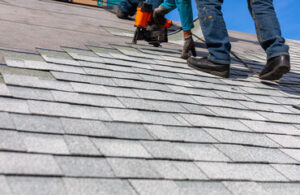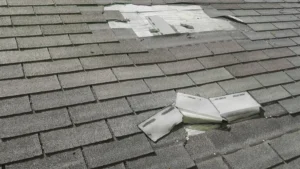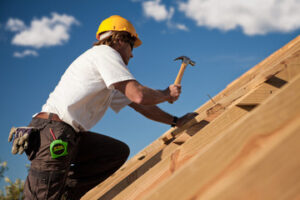Roof work can be dangerous, even for a professional roofing contractor. It requires a stable ladder and suitable footwear to prevent being stepped on by stray shingles or nails.

Roofing installation is also noisy. If you have children or pets, keeping them away from the house during this time is a brilliant idea. Visit https://roofersjacksonvillefl.co/ to learn more.
The roof installation process involves many tasks, including preparation work. This includes examining the current roofing system to ensure it’s in good condition and preparing the roof deck for the new roofing material. The roof must also be properly ventilated. During the prep work, the contractor may install vents to prevent moisture buildup and maintain proper air flow. The contractor might also remove the old roof or shingle layers to prepare the area for the new roof.
The contractor must also remove and dispose of any debris that is removed from the roof. This could include tarps, nails and other construction waste. The contractor must also inspect the roof and roof structure to make sure it is structurally sound. The contractor will also determine whether the roof is ready for a replacement and can withstand the weight of the new shingles.
One of the most important aspects of preparatory work is making a safe work environment for the workers. Roofing is dangerous work. It requires climbing on ladders to reach the roof and working in the open. The contractor must use proper safety gear, including a hard hat and harness, when performing this work. The contractor must also be aware of the presence of electrical wires, which are a fire hazard.
Children should be kept away from the work site because of the potential hazards, such as metal flashing that can cut like a razor and nails. Moreover, the noise of hammering and sawing can be unnerving to pets. Lastly, the vibrations created by the crews can cause dust to fall through light fixtures and A/C vents.
Before beginning the actual roofing work, the contractor will lay down underlayment on the roof decking. This waterproofing material adds an extra layer of protection against rain and harsh weather. The contractor will then install starter shingles to the bottom and sides of the roof, which add strength and protection at the most vulnerable areas. The valleys of the roof are water-prone areas, and the contractor will install the felt paper and shingles in special ways to provide maximum protection for this area.
Materials
There are several different types of roofing materials that can be used. They range from natural products such as thatch and slate to modern elastomeric asphalts. They can be used on roofs that are either self-supporting or supported by an underlying structure. They are usually placed over a secondary water-resistant material known as underlayment.
When preparing to do a roofing job, it is important to have the necessary tools to do so. This includes a ladder that is tall enough to access the roof. It is also a good idea to have safety goggles to protect yourself from any stray nails or wood splinters that may be kicked up while you are working on the roof.
A caulking gun is another tool that should be on hand for the job. It is much easier to use than a bucket of caulking, and it allows you to be more precise with your application. You should also have a pair of tin snips to cut through metal flashing and gutters. You can find these at your local hardware store, and they are especially helpful for curved work.
Another great tool for roofing is a pair of gloves. They will help you to keep your hands clean while you are working, and they can also protect you from any chemicals that might be present on the roof. You should also have a trash receptacle that is large enough to hold all of the waste from the job. It is a good idea to have the receptacle in the bed of your truck, or on-site in a dumpster.
Slate is a very durable roofing material that can last for 50 years or more. It is also fireproof and resistant to high winds and extreme temperatures. It can be expensive, but it offers a beautiful look to your home and can increase its value.
Concrete tiles are a cheaper alternative to clay tiles, and they can mimic the appearance of many different types of roofing. They can also withstand high winds and extreme weather conditions, and they are easy to maintain.
Installation
Roof installation involves the placement of new roofing materials to cover a building and provide weatherproofing. During the process, roofers inspect the existing structure to assess its condition and determine the type and quantity of required roofing materials. They also remove any old shingles and underlayment, which allows them to thoroughly inspect the roof deck for damage and rot. Depending on the type of roof, contractors may also install ventilation systems and ridge vents to prevent water leaks.
Roof replacement can be an invasive process and homeowners should be prepared for some disruption to their daily routine. For example, they might need to move vehicles out of the garage or driveway to protect them from construction debris or make arrangements for their pets or children to stay away from the work area for safety reasons. It’s also important for homeowners to communicate with their roofers so they can understand the process and address any questions or concerns.





